Space Telescope
- All
- News
- Videos
- Web Stories
-

How Hot Was the Universe 7 Billion Years Ago? Scientists Now Have an Answer
- Wednesday November 5, 2025
- Written by Gadgets 360 Staff
Japanese astronomers using ALMA data have found the universe was about twice as hot 7 billion years ago, with a temperature of 5.13 K compared to today’s 2.7 K. The finding aligns perfectly with Big Bang predictions that the Universe cools as it expands, providing the most precise mid-epoch measurement yet and reinforcing confidence in standard c...
-
 www.gadgets360.com
www.gadgets360.com
-

Interstellar Visitor 3I/ATLAS Brightens Faster Than Expected, Surprising Scientists
- Tuesday November 4, 2025
- Written by Gadgets 360 Staff
The interstellar comet 3I/ATLAS has brightened far faster than expected during its solar approach, surprising researchers. Scientists say the unusual surge may point to rare chemical traits from another star system. Further observations in 2025 may reveal why this cosmic visitor behaves differently from typical comets in our solar neighbourhood.
-
 www.gadgets360.com
www.gadgets360.com
-

Hubble Observes Massive Stellar Eruption from EK Draconis, Hinting at Life’s Origins
- Sunday November 2, 2025
- Written by Gadgets 360 Staff
Astronomers using the Hubble Space Telescope observed a huge solar storm from EK Draconis, a young Sun-like star. The eruption’s energy may trigger atmospheric chemistry, forming greenhouse gases and organic molecules. Such events could mirror early solar activity that helped spark life on ancient Earth and distant exoplanets.
-
 www.gadgets360.com
www.gadgets360.com
-

NASA’s JWST Produces First-Ever 3D Map of Distant Planet WASP-18b
- Monday November 3, 2025
- Written by Gadgets 360 Staff
NASA’s James Webb Space Telescope has created the first-ever 3D atmospheric map of an exoplanet, revealing the extreme conditions on WASP-18b, an “ultra-hot Jupiter” located 400 light-years away. Using infrared eclipse mapping, scientists discovered a scorching hotspot over 2,700 °C where water molecules are breaking apart. This groundbreaki...
-
 www.gadgets360.com
www.gadgets360.com
-

Scientists Detect Hidden Magnetic Waves That Could Explain the Sun’s Mysterious Heat
- Sunday November 2, 2025
- Written by Gadgets 360 Staff
For the first time, scientists have directly observed twisting Alfvén waves in the Sun’s corona using the Inouye Solar Telescope. The discovery could explain why the Sun’s outer atmosphere is millions of degrees hotter than its surface, offering key insights into solar energy transfer and space weather prediction.
-
 www.gadgets360.com
www.gadgets360.com
-

New Images of Interstellar Object 3I/ATLAS Show a Giant Jet Shooting Toward the Sun
- Sunday October 26, 2025
- Written by Gadgets 360 Staff
New telescope images show interstellar comet 3I/ATLAS ejecting a giant jet of gas and dust toward the Sun. Scientists say the phenomenon confirms its natural cometary behaviour, offering clues about how such ancient interstellar visitors react to solar heat.
-
 www.gadgets360.com
www.gadgets360.com
-

James Webb Telescope Finds Early Universe Galaxies Were More Chaotic Than We Thought
- Thursday October 23, 2025
- Written by Gadgets 360 Staff
The James Webb Space Telescope has revealed that galaxies in the early universe were far more chaotic and unstable than once believed. A new study shows that gas turbulence and intense star formation disrupted young galaxies, reshaping scientists’ understanding of how galaxies evolved into the structured systems seen today.
-
 www.gadgets360.com
www.gadgets360.com
-

NASA Telescopes Capture First-Ever Companion Star Orbiting Massive Red Supergiant Betelgeuse
- Sunday October 26, 2025
- Written by Gadgets 360 Staff
Astronomers have detected a small companion star orbiting the red supergiant Betelgeuse using Hubble and Chandra observations. Dubbed “Betelbuddy,” the discovery reveals an extreme binary system that challenges existing models of stellar evolution and may offer clues to Betelgeuse’s future.
-
 www.gadgets360.com
www.gadgets360.com
-

James Webb Telescope Uncovers the Turbulent Birth of the First Galaxies
- Saturday October 25, 2025
- Written by Gadgets 360 Staff
Using JWST data, astronomers analyzed more than 250 galaxies from the universe’s first 1.5 billion years and found most were chaotic, with gas swirling in all directions. Only a few showed early signs of ordered rotation. The findings reveal how intense star formation and gravitational turbulence gave way to stability, transforming the early univ...
-
 www.gadgets360.com
www.gadgets360.com
-

Scientists Create Most Detailed Radio Map of Early Universe Using MWA
- Saturday October 18, 2025
- Written by Gadgets 360 Staff
Scientists using the Murchison Widefield Array in Australia analyzed nine years of radio data to study the elusive 21-cm hydrogen signal from the universe’s dark ages. Their findings suggest early black holes and stars had already heated cosmic gas, marking the first observational evidence of this warming phase.
-
 www.gadgets360.com
www.gadgets360.com
-

Dark Matter Might Leave A Faint Colour Mark In Light, Say Scientists
- Thursday October 16, 2025
- Written by Gadgets 360 Staff
Dark matter, though invisible, might subtly alter the colour of light passing through it, according to a new University of York study. Researchers propose that weak particle interactions could create faint red or blue tints, offering a new path for future telescopes to detect dark matter indirectly.
-
 www.gadgets360.com
www.gadgets360.com
-

Astronomers Detect Smallest Known Clump of Pure Dark Matter Using Gravitational Lensing
- Tuesday October 14, 2025
- Written by Gadgets 360 Staff
Astronomers using a global radio telescope array have detected the smallest known pure dark matter clump, roughly a million times the Sun’s mass. Found through a faint gravitational distortion in an Einstein ring, it offers new insight into how dark matter halos form across the universe.
-
 www.gadgets360.com
www.gadgets360.com
-

James Webb Space Telescope Detects Phosphine on Brown Dwarf Wolf 1130C
- Thursday October 9, 2025
- Written by Gadgets 360 Staff
Using the James Webb Space Telescope, scientists have detected phosphine gas in the atmosphere of the brown dwarf Wolf 1130C, about 54 light-years away. The finding suggests phosphine can form in extreme, non-biological environments, challenging its status as a potential biomarker and reshaping how scientists search for alien life.
-
 www.gadgets360.com
www.gadgets360.com
-

Tiny Asteroid 2025 TF Zooms Past Earth Undetected, Closer Than Satellites
- Tuesday October 7, 2025
- Written by Gadgets 360 Staff
A small asteroid named 2025 TF surprised astronomers after flying only 265 miles above Antarctica, lower than many satellites. Detected post-passage by ESA, it underscores the challenge of spotting small, fast-moving space rocks before they come close to Earth.
-
 www.gadgets360.com
www.gadgets360.com
-

JWST Reveals Stunning New Details About M87’s Supermassive Black Hole Jet
- Saturday October 4, 2025
- Written by Gadgets 360 Staff
Recent images captured by the James Webb Space Telescope (JWST) are the clearest ever pictures of the jet arriving from the massive black hole in the galaxy named Messier 87 (M87). There are clear details in the image shot by the telescope, which show the change of brightness, shape and the jet that is usually in disguise. As per scientists, this d...
-
 www.gadgets360.com
www.gadgets360.com
-

How Hot Was the Universe 7 Billion Years Ago? Scientists Now Have an Answer
- Wednesday November 5, 2025
- Written by Gadgets 360 Staff
Japanese astronomers using ALMA data have found the universe was about twice as hot 7 billion years ago, with a temperature of 5.13 K compared to today’s 2.7 K. The finding aligns perfectly with Big Bang predictions that the Universe cools as it expands, providing the most precise mid-epoch measurement yet and reinforcing confidence in standard c...
-
 www.gadgets360.com
www.gadgets360.com
-

Interstellar Visitor 3I/ATLAS Brightens Faster Than Expected, Surprising Scientists
- Tuesday November 4, 2025
- Written by Gadgets 360 Staff
The interstellar comet 3I/ATLAS has brightened far faster than expected during its solar approach, surprising researchers. Scientists say the unusual surge may point to rare chemical traits from another star system. Further observations in 2025 may reveal why this cosmic visitor behaves differently from typical comets in our solar neighbourhood.
-
 www.gadgets360.com
www.gadgets360.com
-

Hubble Observes Massive Stellar Eruption from EK Draconis, Hinting at Life’s Origins
- Sunday November 2, 2025
- Written by Gadgets 360 Staff
Astronomers using the Hubble Space Telescope observed a huge solar storm from EK Draconis, a young Sun-like star. The eruption’s energy may trigger atmospheric chemistry, forming greenhouse gases and organic molecules. Such events could mirror early solar activity that helped spark life on ancient Earth and distant exoplanets.
-
 www.gadgets360.com
www.gadgets360.com
-

NASA’s JWST Produces First-Ever 3D Map of Distant Planet WASP-18b
- Monday November 3, 2025
- Written by Gadgets 360 Staff
NASA’s James Webb Space Telescope has created the first-ever 3D atmospheric map of an exoplanet, revealing the extreme conditions on WASP-18b, an “ultra-hot Jupiter” located 400 light-years away. Using infrared eclipse mapping, scientists discovered a scorching hotspot over 2,700 °C where water molecules are breaking apart. This groundbreaki...
-
 www.gadgets360.com
www.gadgets360.com
-

Scientists Detect Hidden Magnetic Waves That Could Explain the Sun’s Mysterious Heat
- Sunday November 2, 2025
- Written by Gadgets 360 Staff
For the first time, scientists have directly observed twisting Alfvén waves in the Sun’s corona using the Inouye Solar Telescope. The discovery could explain why the Sun’s outer atmosphere is millions of degrees hotter than its surface, offering key insights into solar energy transfer and space weather prediction.
-
 www.gadgets360.com
www.gadgets360.com
-

New Images of Interstellar Object 3I/ATLAS Show a Giant Jet Shooting Toward the Sun
- Sunday October 26, 2025
- Written by Gadgets 360 Staff
New telescope images show interstellar comet 3I/ATLAS ejecting a giant jet of gas and dust toward the Sun. Scientists say the phenomenon confirms its natural cometary behaviour, offering clues about how such ancient interstellar visitors react to solar heat.
-
 www.gadgets360.com
www.gadgets360.com
-

James Webb Telescope Finds Early Universe Galaxies Were More Chaotic Than We Thought
- Thursday October 23, 2025
- Written by Gadgets 360 Staff
The James Webb Space Telescope has revealed that galaxies in the early universe were far more chaotic and unstable than once believed. A new study shows that gas turbulence and intense star formation disrupted young galaxies, reshaping scientists’ understanding of how galaxies evolved into the structured systems seen today.
-
 www.gadgets360.com
www.gadgets360.com
-

NASA Telescopes Capture First-Ever Companion Star Orbiting Massive Red Supergiant Betelgeuse
- Sunday October 26, 2025
- Written by Gadgets 360 Staff
Astronomers have detected a small companion star orbiting the red supergiant Betelgeuse using Hubble and Chandra observations. Dubbed “Betelbuddy,” the discovery reveals an extreme binary system that challenges existing models of stellar evolution and may offer clues to Betelgeuse’s future.
-
 www.gadgets360.com
www.gadgets360.com
-

James Webb Telescope Uncovers the Turbulent Birth of the First Galaxies
- Saturday October 25, 2025
- Written by Gadgets 360 Staff
Using JWST data, astronomers analyzed more than 250 galaxies from the universe’s first 1.5 billion years and found most were chaotic, with gas swirling in all directions. Only a few showed early signs of ordered rotation. The findings reveal how intense star formation and gravitational turbulence gave way to stability, transforming the early univ...
-
 www.gadgets360.com
www.gadgets360.com
-

Scientists Create Most Detailed Radio Map of Early Universe Using MWA
- Saturday October 18, 2025
- Written by Gadgets 360 Staff
Scientists using the Murchison Widefield Array in Australia analyzed nine years of radio data to study the elusive 21-cm hydrogen signal from the universe’s dark ages. Their findings suggest early black holes and stars had already heated cosmic gas, marking the first observational evidence of this warming phase.
-
 www.gadgets360.com
www.gadgets360.com
-

Dark Matter Might Leave A Faint Colour Mark In Light, Say Scientists
- Thursday October 16, 2025
- Written by Gadgets 360 Staff
Dark matter, though invisible, might subtly alter the colour of light passing through it, according to a new University of York study. Researchers propose that weak particle interactions could create faint red or blue tints, offering a new path for future telescopes to detect dark matter indirectly.
-
 www.gadgets360.com
www.gadgets360.com
-

Astronomers Detect Smallest Known Clump of Pure Dark Matter Using Gravitational Lensing
- Tuesday October 14, 2025
- Written by Gadgets 360 Staff
Astronomers using a global radio telescope array have detected the smallest known pure dark matter clump, roughly a million times the Sun’s mass. Found through a faint gravitational distortion in an Einstein ring, it offers new insight into how dark matter halos form across the universe.
-
 www.gadgets360.com
www.gadgets360.com
-

James Webb Space Telescope Detects Phosphine on Brown Dwarf Wolf 1130C
- Thursday October 9, 2025
- Written by Gadgets 360 Staff
Using the James Webb Space Telescope, scientists have detected phosphine gas in the atmosphere of the brown dwarf Wolf 1130C, about 54 light-years away. The finding suggests phosphine can form in extreme, non-biological environments, challenging its status as a potential biomarker and reshaping how scientists search for alien life.
-
 www.gadgets360.com
www.gadgets360.com
-

Tiny Asteroid 2025 TF Zooms Past Earth Undetected, Closer Than Satellites
- Tuesday October 7, 2025
- Written by Gadgets 360 Staff
A small asteroid named 2025 TF surprised astronomers after flying only 265 miles above Antarctica, lower than many satellites. Detected post-passage by ESA, it underscores the challenge of spotting small, fast-moving space rocks before they come close to Earth.
-
 www.gadgets360.com
www.gadgets360.com
-

JWST Reveals Stunning New Details About M87’s Supermassive Black Hole Jet
- Saturday October 4, 2025
- Written by Gadgets 360 Staff
Recent images captured by the James Webb Space Telescope (JWST) are the clearest ever pictures of the jet arriving from the massive black hole in the galaxy named Messier 87 (M87). There are clear details in the image shot by the telescope, which show the change of brightness, shape and the jet that is usually in disguise. As per scientists, this d...
-
 www.gadgets360.com
www.gadgets360.com






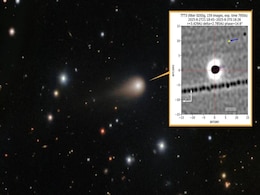
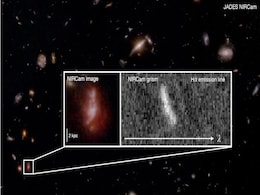


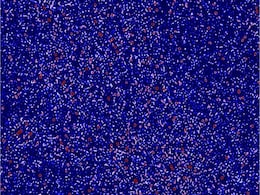
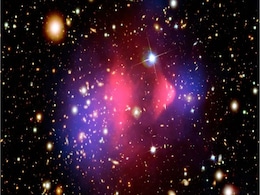
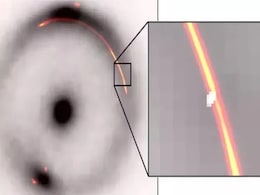
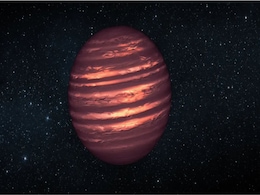

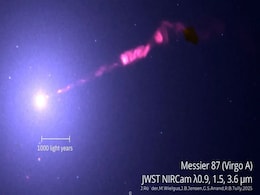
![Gadgets 360 With Technical Guruji: Did You Know? [April 6, 2024] Gadgets 360 With Technical Guruji: Did You Know? [April 6, 2024]](https://c.ndtvimg.com/2024-02/mpconh58_did-you-know_640x480_10_February_24.jpg?downsize=245:163)








